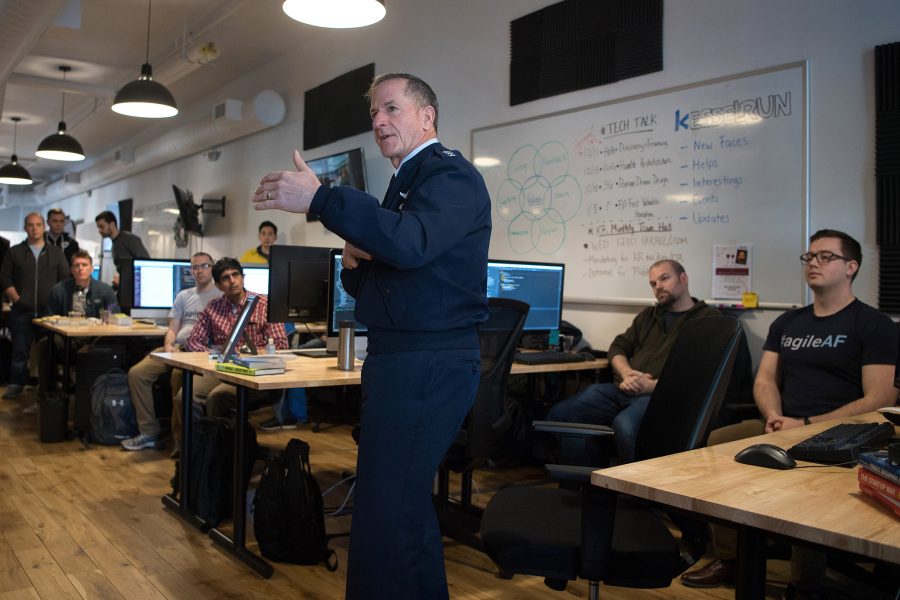Pentagon acquisition chief Ellen Lord said work is already underway to meet one of 10 key recommendations the Defense Innovation Board issued in its congressionally mandated report on improving software acquisition, to be delivered to lawmakers next week.
Speaking at a DIB meeting in Washington on Thursday, Lord pointed to “pathfinder” programs that are trying to lower the bar of entry for small businesses to do work with the Defense Department, as well as to speed software development and delivery.
“We will set up hardened containers in an enclave in a government cloud or a cloud hosted for us,” she said. “We will provide these hardened containers that, if industry goes in and uses them, develops their software using our stack, then they will automatically get an authority to operate—really a time crunch issue for us when we’re trying to deploy capability quickly.”
Over the past few years, the Defense Department has increasingly embraced commercial industry’s approach to software development: continuous, responsive, and fast. It plans to rewrite its acquisition rules in a way that recognizes software and hardware should be bought and maintained differently.
The DIB’s 10 main recommendations and attached legislative language aim to make it easier to plan and pay for software upgrades, and to recruit and retain programmers and engineers.
Top recommendations include:
Creating a new software acquisition process that relies on continuous creation and secure delivery of working software;
- Funding software through a new, specialized budget account instead of splitting it between development, production, and sustainment;
- Setting up digital infrastructure in each service or agency to quickly deploy software to the field, and incentivize contractors to use it;
- Fully automating testing and evaluation;
- Allowing software to operate on any program and platform so services and agencies can work together more easily;
- Creating civilian-military coding groups like Kessel Run that use agile development and operations;
- Offering more specialized training on modern software practices to chief information officers, service acquisition executives, program managers, and PEOs;
- Prioritizing cybersecurity to contain threats once they enter software, not only when they try to get in;
- And writing more flexible program requirements “to avoid requirements creep, overly ambitious requirements, and program delays.”
The “Software Acquisition and Practices,” or SWAP, report also includes legislative language that Lord said is ripe for the fiscal 2020 National Defense Authorization Act.
“There’s been a high level of interaction with both the House and the Senate, a high level of interaction throughout DOD,” she said. “So what we are starting this afternoon is implementing what we’re learning and I very much look forward to the team delivering the final report to Congress.”
In a set of 16 other goals to tackle at a later point, the DIB added that every service should name a digital program executive officer like the Air Force did last fall.
Steve Wert, also the service’s battle management PEO, helps manage iterative development and operations for a range of software and hardware programs ranging from the Air Operations Center’s Kessel Run facility to a portfolio of systems that counter small drones.
After Wert successfully oversaw the rollout of Kessel Run, a public-private coding partnership that salvaged a failed air operations center upgrade program in 2017, the Air Force offered him a new title. He now works with programs to see where they can best use iterative development and is helping organizations across the service to learn from each other’s best practices.
The Air Force has also tried to address “color of money” issues in its budgets by, for example, shifting the majority of its AOC coding funding into research and development instead of procurement, and moving away from developmental and operational testing blocks in certain programs.
“The services need to start thinking about their software talent in the same way as they think about their warfighting talent because software is what we use to define modern warfare,” said Richard Murray, a professor at the California Institute of Technology who helped oversee the study. He added, “We believe the talent is out there. … We are convinced that this is an area that the department can take advantage of and can make use of.”
